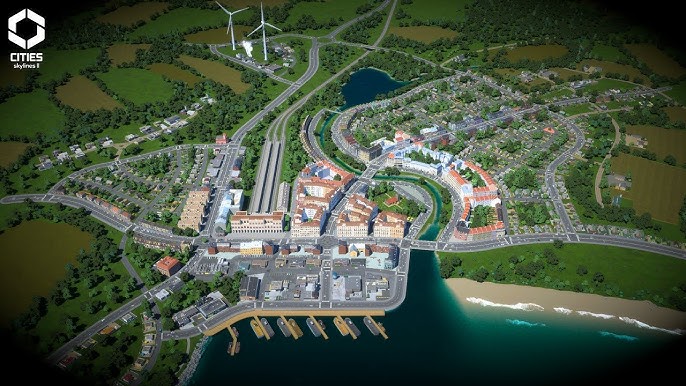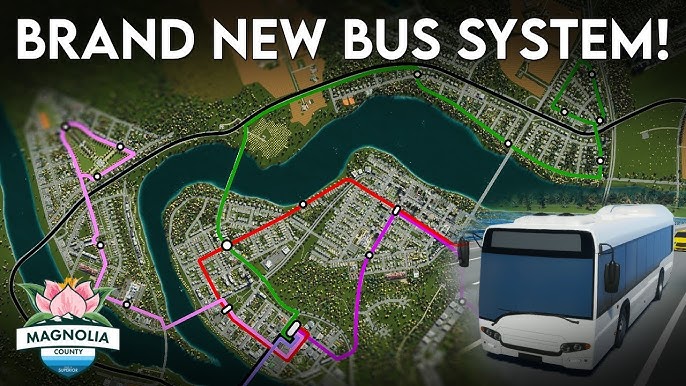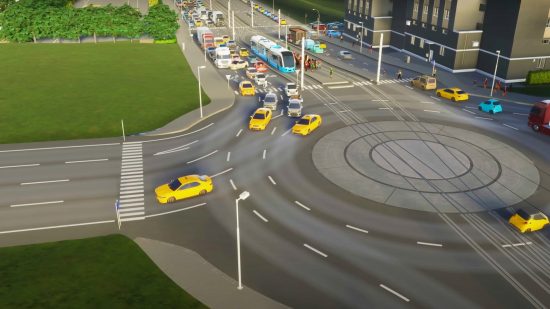Untangling Traffic: A City Planner's Guide to Cities: Skylines 2 So, you've built your dream European metropolis in Cities: Skylines 2.

So, you've built your dream European metropolis in Cities: Skylines 2. Cobblestone streets, charming canals, and… a transportation network that resembles a plate of spaghetti after a toddler's "art attack." Don't despair! As a seasoned (and slightly cynical) city planning consultant, I’m here to help you transform your gridlocked nightmare into a smoothly functioning urban paradise. We'll dive deep into optimizing traffic flow and public transportation, ensuring your citizens are happy and your economy thrives. Buckle up, because urban planning is serious business… mostly.
A classic Cities: Skylines 2 traffic jam. Note the arterial road feeding directly into a local street - recipe for disaster!
I. Problem Statement: The Gridlock Gauntlet
Traffic congestion in Cities: Skylines 2 isn't just an aesthetic issue; it's a city-killing disease. Imagine this: your industries can't get resources, your citizens are late for work (and therefore, unhappy), and the air is thick with the fumes of idling vehicles. Look familiar? We're talking about increased commute times (measured in minutes lost from precious gaming time, obviously), a decline in citizen happiness (the horror!), and significant disruption to your businesses, leading to lower tax revenue (the ultimate tragedy!). A city-wide traffic flow below 50% is a red flag, and a citizen happiness score plummeting towards the "miserable" range means you've got a problem. Time to roll up our sleeves.
II. Proposed Solutions: Operation Urban Rescue
A. Road Network Optimization: Building the Arteries of Your City
The secret to a smooth-flowing city lies in a well-designed road hierarchy. Think of it as a system of arteries, collectors, and capillaries.
- Arterial Roads: These are your highways and major thoroughfares, designed to move large volumes of traffic quickly across long distances. Keep them free of intersections and direct connections to residential zones. The goal: speed, speed, speed.
- Collector Roads: These roads connect arterial roads to local streets. They handle moderate traffic volumes and serve as a transition between high-speed arteries and low-speed local areas.
- Local Streets: These are the capillaries of your city, providing access to individual buildings and residences. Keep them short, narrow, and relatively low-density.
 Roundabouts are your friend. This diagram shows how to properly configure lane connections for optimal flow. Remember to anticipate traffic volume when designing the circle diameter.
Roundabouts are your friend. This diagram shows how to properly configure lane connections for optimal flow. Remember to anticipate traffic volume when designing the circle diameter.
Effective Intersection Design: Intersections are the chokepoints of any road network. Here are a few solutions to unclog them:
- Roundabouts: The unsung heroes of traffic management. Roundabouts keep traffic flowing continuously, reducing the need for stops and starts. Just make sure they’re sized appropriately for the volume of traffic.
- Timed Traffic Lights: A classic solution, but use them judiciously. Manually adjust the timing of traffic lights to optimize flow based on the time of day.
- Grade Separation (Overpasses/Underpasses): The ultimate solution for high-traffic intersections. Separating traffic vertically eliminates the need for any cross-traffic, resulting in smooth, uninterrupted flow. This is expensive, but worth it.
One-Way Streets: Strategic placement of one-way streets can dramatically improve traffic flow, especially in dense urban areas. Use them to create loops and direct traffic around bottlenecks.
Zoning Strategies: High-density residential and commercial zones generate a lot of traffic. Place them near public transport hubs to encourage citizens to leave their cars at home.
 Proximity is key! Notice the high-density residential and commercial zones cluster strategically around public transport options, decreasing personal vehicle traffic.
Proximity is key! Notice the high-density residential and commercial zones cluster strategically around public transport options, decreasing personal vehicle traffic.
B. Public Transportation Implementation: The People Movers
A robust public transportation system is essential for any modern city.
- Bus Network Design: Plan your bus routes carefully, ensuring frequent service and strategically placed stops. Don't just slap down a few bus lines and hope for the best. Think about where people need to go and how to get them there efficiently.
 Effective public transport planning results in busy bus routes! Good spacing of stops is visible. Note the realistic shadow casting due to the in-game time of day.
Effective public transport planning results in busy bus routes! Good spacing of stops is visible. Note the realistic shadow casting due to the in-game time of day.
- Metro/Subway Systems: Ideal for moving large numbers of people quickly within dense urban areas. Plan your subway lines carefully, connecting key locations and avoiding unnecessary curves and turns. Underground infrastructure placement requires forethought!
 A seamless integration of a metro station. Note the pedestrian flow around the station and the architectural harmony with the surrounding buildings.
A seamless integration of a metro station. Note the pedestrian flow around the station and the architectural harmony with the surrounding buildings.
- Train Networks: Use train lines to connect industrial areas and neighboring cities, reducing reliance on trucks for cargo transport. Passenger trains can also be a great way to move people between different parts of your city.
 Here is a functional train station with cargo and passenger trains - a crucial aspect of sustainable traffic management. Notice the separate cargo and passenger platforms.
Here is a functional train station with cargo and passenger trains - a crucial aspect of sustainable traffic management. Notice the separate cargo and passenger platforms.
- Dedicated Bus Lanes: Give buses priority on busy roads by creating dedicated bus lanes. This will speed up bus service and encourage more people to use public transport.
C. Demand Management: Persuading Citizens to Ditch the Car
Sometimes, the best way to reduce traffic is to discourage people from driving in the first place.
- Parking Policies: Implement paid parking zones in high-demand areas to discourage excessive car use. People are surprisingly willing to take the bus if parking costs more than their monthly bus pass.
- Pedestrian and Bicycle Infrastructure: Create dedicated pathways and bike lanes to encourage alternative transportation. Make it easy and pleasant for people to walk or cycle, and they'll be more likely to do it.
 Pedestrian-friendly zones are a key component of reducing car dependency. Wide sidewalks, trees, and dedicated bike paths encourage people to ditch the car and explore the city on foot or by bike.
Pedestrian-friendly zones are a key component of reducing car dependency. Wide sidewalks, trees, and dedicated bike paths encourage people to ditch the car and explore the city on foot or by bike.
III. Tips and Tricks: The City Planner's Handbook
- Early Planning: Lay out a basic road network before you start building. A little foresight can save you a lot of headaches later on.
- Monitor Traffic Flow: Use the in-game traffic tools to identify bottlenecks and problem areas. Data is your friend!
- Iterative Adjustments: Continuously refine your road network and public transport based on real-time data. City planning is an ongoing process, not a one-time fix.
- Avoid Common Mistakes: Don't oversaturate highways with exits, and plan your industrial areas carefully to minimize truck traffic through residential zones.
IV. PC-Specific Notes: Optimizing Your Rig for Urban Domination
- Control Scheme: Remap essential hotkeys for efficient city management. Quick access to road building and zoning tools is a must.
- Graphics Settings: Optimize performance by adjusting shadow quality, level of detail, and texture resolution. Cities: Skylines 2 can be demanding, so don't be afraid to dial things down.
- Mod Recommendations: Keep an eye out for mods that enhance performance, like those utilizing DLSS or FSR. Check the [Cities: Skylines 2 Workshop](hypothetical link) for compatible and stable mods.
- Performance Tweaks: Experiment with reducing CPU usage by limiting the number of active agents (cars, pedestrians) or reducing the simulation speed. Be cautious when editing config files, but it can sometimes provide a performance boost.
V. Conclusion: From Gridlock to Glory
By implementing these strategies, you can transform your congested metropolis into a thriving urban center. You’ll unlock larger city sizes, more advanced industries, and a higher quality of life for your citizens. And who knows, you might even unlock a few achievements along the way. So go forth, plan wisely, and build the city of your dreams!